Explorer® One™ Compact UV and Green Lasers
Overview
Compact and Lightweight UV and Green ns Lasers
- High Power – Up to >6 W at 355 nm and 5 W at 532 nm
- Lightweight – only 1.5 and 4.1 kg, air cooled design
- Unique It’s in the Box™ design – smaller than any competitive product
- Feature rich software for ease-of-use and simplified integration
- E-Track™ – active pulse energy and power control on selected mode
- Single pulse energy measurement from single shot to 500 kHz
- Rugged, reliable design and construction for demanding 24/7 applications
Products
Applications
- LED Manufacturing
- Display Manufacturing
- OLED
- Flat panel display repair
- Laser Marking
- Intra-glass and glass surface marking
- UID marking
- Functional marking
- Wafer marking and processing
- Laser Cutting and Drilling
- Thin foils
- Laser Scribing
- Thin films
- PCB Manufacturing
- Resistor and Inductance Trimming
- Additive manufacturing - stereolithography
- MALDI-TOF mass spectrometry
- Laser microdissection
- UV titling
- LiDAR
Specifications
Output Characteristics1,4
| Explorer One 349-60 |
Explorer One 349-120 |
Explorer One 355-1 |
Explorer One HE 355-100 |
Explorer One HE 532-200 |
Explorer One 532-2 |
Explorer One XP 532-5 |
Explorer One XP 355-2 |
Explorer One HP HE 355-200 |
Explorer One HP 355-4 |
Explorer One HP 355-6 |
|
|---|---|---|---|---|---|---|---|---|---|---|---|
| Wavelength | 349 nm | 355 nm | 532 nm | 355 nm | 355 nm | ||||||
| Gain Medium | Nd:YLF | Nd:YVO4 | Nd:YAG | Nd:YVO4 | Nd:YAG | Nd:YVO4 | |||||
| Pulse Energy | 60 µJ @ 1 kHz | 120 µJ @ 1 kHz | 25 µJ @ <30 kHz | 80 µJ @ 10 kHz | 180 µJ @ 10 kHz | 40 µJ @ 50 kHz | 63 µJ @ 80 kHz | 25 µJ @ 80 kHz | >200 µJ @ 20 kHz | >50 µJ @ 80 kHz | >60 µJ @ 100 kHz |
| Output Power | 60 mW @ 1 kHz | 120 mW @ 1 kHz | 800 mW @ 50 kHz | 800 mW @ 10 kHz | 1.8 W @ 10 kHz | 2 W @ 50 kHz | 5 W @ 80 kHz | 2 W @ 80 kHz | >4 W @ 20 kHz | >4 W @ 80 kHz | >6 W @ 100 kHz |
| Pulse Width (FWHM) | <5 ns | <10 ns | <15 ns | <12 ns @ 80 kHz | <10 ns @ 80 kHz | <15 ns @ 20 kHz, 4 W | <15 ns @ 80 kHz, 4 W | <12 ns @ 100 kHz, 6 W | |||
| Pulse Energy Noise (rms)2 | <3% | <4% | <2% | ||||||||
| Long Term Stability (rms) | <2% | <±2% | <2% | ||||||||
| Repetition Rate | Single shot to 5 kHz | Single shot to 200 kHz | Single shot 60 kHz | Single shot 200 kHz | Single shot to 500 kHz | Single shot to 200 kHz | Single shot to 500 kHz | ||||
| Jitter (Laser Pulse to OptoSync) | <±0.5 ns | - | - | ||||||||
Beam Characteristics2
| Explorer One 349-60 |
Explorer One 349-120 |
Explorer One 355-1 |
Explorer One HE 355-100 |
Explorer One HE 532-200 |
Explorer One 532-2 |
Explorer One XP 532-5 |
Explorer One XP 355-2 |
Explorer One HP HE 355-200 |
Explorer One HP 355-4 |
Explorer One HP 355-6 |
|
|---|---|---|---|---|---|---|---|---|---|---|---|
| Spatial Mode | M2 <1.3, TEM00 | M2 <1.2, TEM00 | M2 <1.3, TEM00 | M2 <1.3, TEM00 | |||||||
| Beam Diameter, at waist (1/e2) | 0.145 mm ±0.02 |
0.16 ±0.025 mm |
0.19 ±0.035 mm |
0.182 ± 0.037 mm |
0.18 ±0.020 mm |
0.21 ±0.021 mm |
0.18 ±0.027 mm |
0.16 ±0.024 mm |
1.3 ± 0.33 mm |
1.1 ± 0.25 mm |
1.3 ± 0.33 mm |
| Beam Divergence, full angle (1/e2) | 3.2 ± 0.5 mrad | 3.0 ±0.5 mrad | 2.5 ±0.6 mrad | 3.8 ±0.5 mrad | 3.5 ±0.5 mrad | 3.9 ±0.8 mrad | 3.5 ±0.8 mrad | 0.5 ± 0.2 mrad | 0.4 ± 0.2 mrad | ||
| Beam Ellipticity2 | 1 ±0.1 | 1 ±0.2 | 1 ±0.1 | ||||||||
| Polarization Ratio | >100:1 (vertical) | >100:1 (horizontal) | 100:1 (vertical) | >100:1 (vertical) | |||||||
Operating Conditions
| Explorer One 349-60 |
Explorer One 349-120 |
Explorer One 355-1 |
Explorer One HE 355-100 |
Explorer One HE 532-200 |
Explorer One 532-2 |
Explorer One XP 532-5 |
Explorer One XP 355-2 |
Explorer One HP HE 355-200 |
Explorer One HP 355-4 |
Explorer One HP 355-6 |
|
|---|---|---|---|---|---|---|---|---|---|---|---|
| Warm-up Time (cold start to >95% full power) |
<10 min | <10 min | |||||||||
| Operating Voltage | 24 VDC ±2 V | 24 VDC ±2 V | |||||||||
| Maximum Inrush Current | <4 A | <9 A | <10 A | ||||||||
| Maximum Power Consumption | <75 W | <150 W | <160 W | <200 W | |||||||
| Typical Power Consumption | <50 W | <100 W | <120 W | <130 W | |||||||
| Laser Head Thermal Heat Dissipation | <75 W | <150 W | <160 W | <200 W | |||||||
Operating Temperature
| Explorer One 349-60 |
Explorer One 349-120 |
Explorer One 355-1 |
Explorer One HE 355-100 |
Explorer One HE 532-200 |
Explorer One 532-2 |
Explorer One XP 532-5 |
Explorer One XP 355-2 |
Explorer One HP HE 355-200 |
Explorer One HP 355-4 |
Explorer One HP 355-6 |
|
|---|---|---|---|---|---|---|---|---|---|---|---|
| Laser Head Temperature at Base | 18-40°C (relative humidity <80%; dew point <20°C)3 | 18-45°C (relative humidity <80%; dew point <20°C)3 | |||||||||
| Storage Temperature Range | -20 to +60°C (<90% relative humidity, non-condensing) | -20 to +60°C (<90% relative humidity, non-condensing) | |||||||||
Physical Characteristics
| Explorer One 349-60 |
Explorer One 349-120 |
Explorer One 355-1 |
Explorer One HE 355-100 |
Explorer One HE 532-200 |
Explorer One 532-2 |
Explorer One XP 532-5 |
Explorer One XP 355-2 |
Explorer One HP HE 355-200 |
Explorer One HP 355-4 |
Explorer One HP 355-6 |
|
|---|---|---|---|---|---|---|---|---|---|---|---|
| Laser Head (L x W x H) | 6.5 x 3.54 x 3 in (165 x 95 x 76.1 mm) |
9.45 x 3.74 x 3.7 in (240 x 95 x 94 mm) |
11.42 x 5.51 x 3.35 in (280 x 130 x 85.1 mm) |
||||||||
| Beam Height | 25.4 mm | 24.5 mm | 25.4 mm | 35 mm | 34.1 mm | 43.2 mm | |||||
| Laser Head Weight | 2.87 lb (1.3 kg) | 6.84 lb (3.1 kg) | 9.25 lb (4.2 kg) | ||||||||
Static Alignment Tolerance
| Explorer One 349-60 |
Explorer One 349-120 |
Explorer One 355-1 |
Explorer One HE 355-100 |
Explorer One HE 532-200 |
Explorer One 532-2 |
Explorer One XP 532-5 |
Explorer One XP 355-2 |
Explorer One HP HE 355-200 |
Explorer One HP 355-4 |
Explorer One HP 355-6 |
|
|---|---|---|---|---|---|---|---|---|---|---|---|
| Beam Position | <±0.25 mm | <±0.3 mm | <±0.5 mm | ||||||||
| Beam Angle | <±1 mrad | <±1 mrad | |||||||||
Software Features
| Explorer One 349-60 |
Explorer One 349-120 |
Explorer One 355-1 |
Explorer One HE 355-100 |
Explorer One HE 532-200 |
Explorer One 532-2 |
Explorer One XP 532-5 |
Explorer One XP 355-2 |
Explorer One HP HE 355-200 |
Explorer One HP 355-4 |
Explorer One HP 355-6 |
|
|---|---|---|---|---|---|---|---|---|---|---|---|
| First Pulse Suppression (FPS) | Yes | Yes | |||||||||
| E-Pulse (Constant Energy Model) | Yes | Yes | |||||||||
| E-Track (Closed Loop Energy Control) | Yes5 | Yes5 | Yes | Yes5 | Yes5 | Yes5 | NA | NA | Yes | ||
Footnotes:
- Due to our continuous product improvement program, specifications may change without notice.
- Specified at nominal power/energy and repetition rate (see power/energy specifications).
- Housing temperature at base.
- Explorer One is a Class IV - High Power Laser, whose beam is, by definition, a safety and fire hazard. Take precautions to prevent exposure to the direct and reflected beams. Diffuse as well as specular reflections can cause severe skin or eye damage.
- E-Track available upon request.
Features
Overview
The Explorer® One™ is the most compact series of UV and green diode pumped solid state (DPSS) q-switch lasers in its class. The It’s in the Box™ design incorporates features such as the very compact air cooled design, short pulse width, high peak power and a feature rich software into one single package to satisfy customer needs with benefits such as ease-of-use and handling, high process quality and short time-to-market in cost sensitive tools.
Three Industrial Platforms
The Explorer One laser models are available on three platforms. The standard platform provides up to 800 mW and 355 nm, 2 W at 532 nm. High energy models are available with pulse energies exceeding 120 µJ at 349 nm, 80 µJ at 355 nm and 180 µJ at 532 nm. The extended power platform, Explorer One XP, is available with power exceeding 2 W at 355 nm and 5 W at 532 nm. The high power platform, the Explorer One HP, is available with a power exceeding 6 W at 355 nm.
High Performance and Reliability in a Compact Size
The Explorer One Family consists of rugged and durable industrial laser designed for longevity and long-term stability in 24/7 applications. Exceptional performance including short pulse width for minimum heat affected zone, unmatched pulse-to-pulse stability and superior beam quality (M2 typically <1.1) makes this laser the perfect tool for precision manufacturing. The lasers’ very compact It’s in the Box design offers a single package solution that allows fast and low cost integration for machine tool builders especially when space is a limiting factor. The very small dimensions of the all-in-one concept as well as low heat dissipation make this laser family the technology of choice for a small tabletop-like instrument. The combination of high output power and air cooled design reduces complexity, thereby resulting in short product development cycles and fast return of investment for our customers.
Advanced Software Controls
Versatility and flexibility are realized by integrating advanced and value-added hardware and software elements such as E-Pulse™ pulse energy control, burst mode, on-demand auto-calibration and single pulse energy measurements up to 500 kHz. The new E-Track™ dynamic pulse energy control feature actively measures and controls the laser for continual energy and power stabilization even under rapidly changing operating set points or environments. E-Track enables “on-the-fly” adjustments and fast gating for precision micromachining applications such as scribing marking, and drilling of tiny features.
In addition the Explorer One laser’s output power is adjustable to optimize the laser performance to the application needs. The system can be operated using TTL and analog control signals. Real-time pulse energy values are available on the integrated analog port.
Compatible Power Sensors
To verify and analyze the output power of your Explorer One laser, we recommend the Ophir 3A-PF-12 (7Z02720), 10A (7Z02637) or F80(120)A-CM-17 (7Z07103) thermal power sensor and Centauri laser power meter. Additional information on this laser measurement equipment can be found on the ophiropt.com website. Other Ophir sensors and meters may also be suitable for the Explorer One, depending on application. Ophir also works with laser system developers to achieve embedded beam diagnostics to monitor system performance as an OEM solution.
Resources
Data Sheets
- Explorer One Datasheet (2.5 MB, PDF)
Manuals
- Explorer® 355 and 532 nm Laser Manual (5.4 MB, PDF)
Drawings & CAD
- Explorer-One Dimensions (383.3 kB, PDF)
- Explorer-One XP Dimensions (2.2 MB, PDF)
Selection Guides
- Explorer One Component Selection Guide (916.2 kB, PDF)
Application Notes
- Industrial Marking and Engraving Applications with High-Energy UV Lasers (1.2 MB, PDF)
- Marking of Food and Beverage Products in High Throughput Production Lines (881.3 kB, PDF)
- Precision Marking in Industrial Manufacturing with Pulsed UV Lasers (511.5 kB, PDF)
- E-Track™ : Active Pulse Energy Control (523.4 kB, PDF)
- Explorer® Fuels Laser Marking Trends Toward Shorter Wavelengths (385.2 kB, PDF)
- Gaussian Versus Flat-top Beam Processing (1.3 MB, PDF)

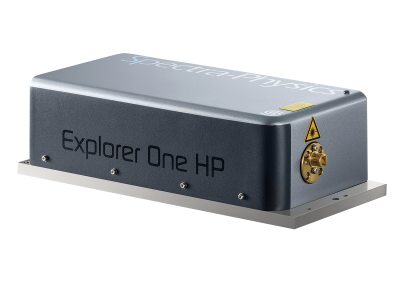
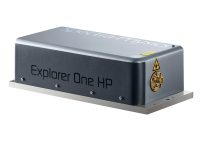
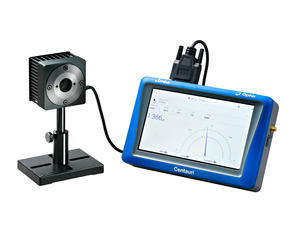
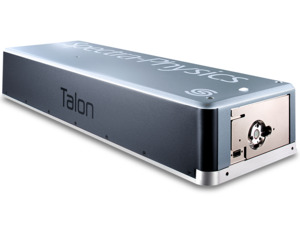
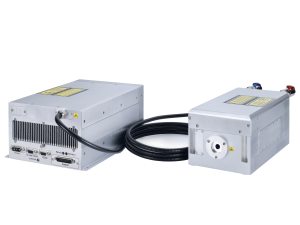
 Ultra-High Velocity
Ultra-High Velocity